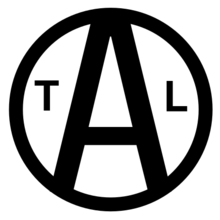Total liberationism

Total liberationism is a political movement that combines anarchism with a commitment to animal and earth liberation. Whilst more conventional approaches to anarchist politics have often focused primarily on opposing the state and capitalism, the struggle for total liberation is additionally concerned with opposing all additional forms of human oppression, as well as the oppression of nonhuman animals and ecosystems.[1] Proponents of total liberation typically espouse a holistic and intersectional revolutionary strategy aimed at using direct action to dismantle all forms of domination and social hierarchy, common examples of which include the state, capitalism, patriarchy, racism, heterosexism, cissexism, disablism, ageism, speciesism, and ecological domination.[2]
History and key concerns
Following a period of general inactivity after the Second World War, anarchism reemerged as a force in global politics during the 1960s. This new era of anarchist struggle was distinguished, however, by its adoption of a range of concerns - such as feminism, anticolonialism, queer liberation, antispeciesism, and ecology - that were previously of little or no concern for most anarchists.[3] More specifically, the involvement by anarchists in the animal and earth liberation movements was characterized, in part, by the rising popularity of veganism within radical circles (something that has been grounded in concerns for both animal rights and environmentalism),[4] as well as the formation of direct action groups such as the Hunt Saboteurs Association, Earth First!, the Animal Liberation Front, and the Earth Liberation Front.[5] The concept of total liberation then began to be used by anarchists during the 1990s in an explicit attempt to clarify important connections between all forms of oppression, and to situate the often isolated political movements against them within a single overall struggle. Moreover, a commitment to total liberation is, beyond its emergence from the historical development of the anarchist movement, also typically grounded in a concern for contemporary schools of political thought such as intersectionality, antispeciesism, ecofeminism, deep ecology, and social ecology.[6] As David Pellow summarises:
The concept of total liberation stems from a determination to understand and combat all forms of inequality and oppression. I propose that it comprises four pillars: (1) an ethic of justice and anti-oppression inclusive of humans, nonhuman animals, and ecosystems; (2) anarchism; (3) anti-capitalism; and (4) an embrace of direct action tactics.[7]
References
- ↑ David N. Pellow (2014) Total Liberation: The Power and Promise of Animal Rights and the Radical Earth Movement; Minneapolis, USA: University of Minnesota Press, pp.5-6
- ↑ Steve Best (2014) The Politics of Total Liberation: Revolution for the 21st century, New York City, USA: Palgrave Macmillan
- ↑ Uri Gordon (2007) Anarchism and Political Theory: Contemporary Problems, Submitted to the Department of Politics & International Relations in partial fulfilment of the requirements for the degree of Doctor of Philosophy (retrieved from theanarchistlibrary.org) pp.44-50
- ↑ Brian A. Dominick (1997) Animal Liberation and Social Revolution: A vegan perspective on anarchism, or an anarchist perspective on veganism (retrieved from theanarchistlibrary.org)
- ↑ anonymous (2003) "Down with the Empire! Up with the Spring!", Do or Die, issue 10
- ↑ David N. Pellow & Hollie N. Brehm (2015) "From the New Ecological Paradigm to Total Liberation: The Emergence of a Social Movement Frame"; The Sociological Quarterly, vol. 56, issue 1, pp.191-3
- ↑ D. Pellow (2014) pp.5-6